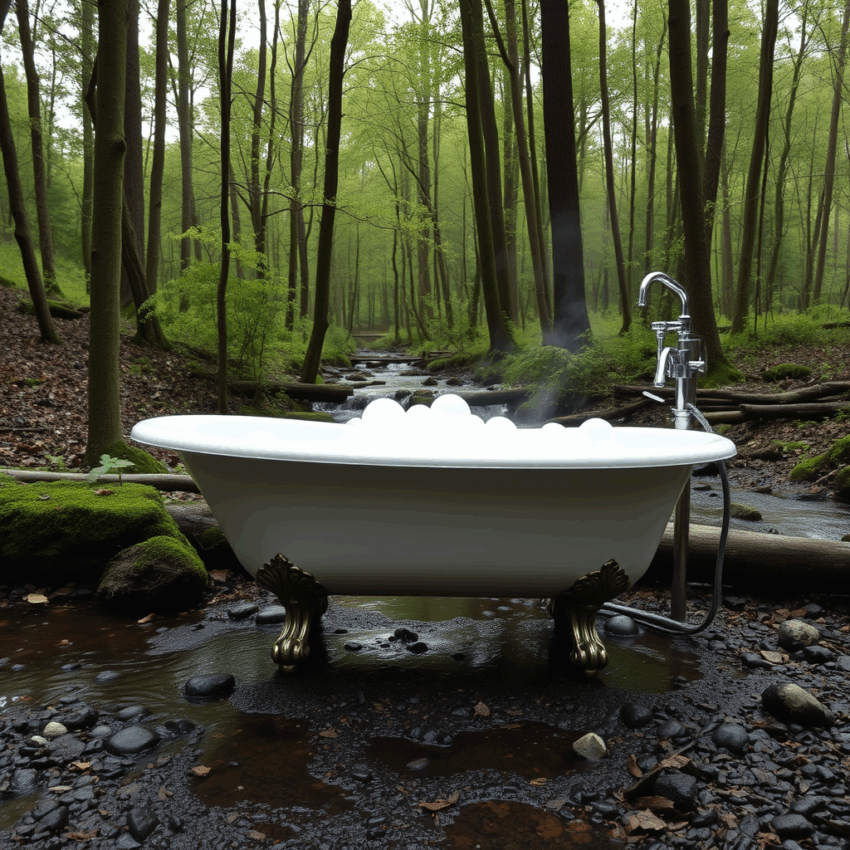Forest bathing.
Some pretty unique images appear in our minds when we hear this term.
A bubble bath in the middle of a forest?
A tub filled with leaves and other natural foliage?
Bathing in a flowing stream hidden deep in a wooded area?
What is forest bathing exactly?
Why should we be doing it?
What are the benefits?
Where can we do it?
How do we do it?
I’ll answer all of these questions along with providing some background and interesting facts about this unique and therapeutic activity.
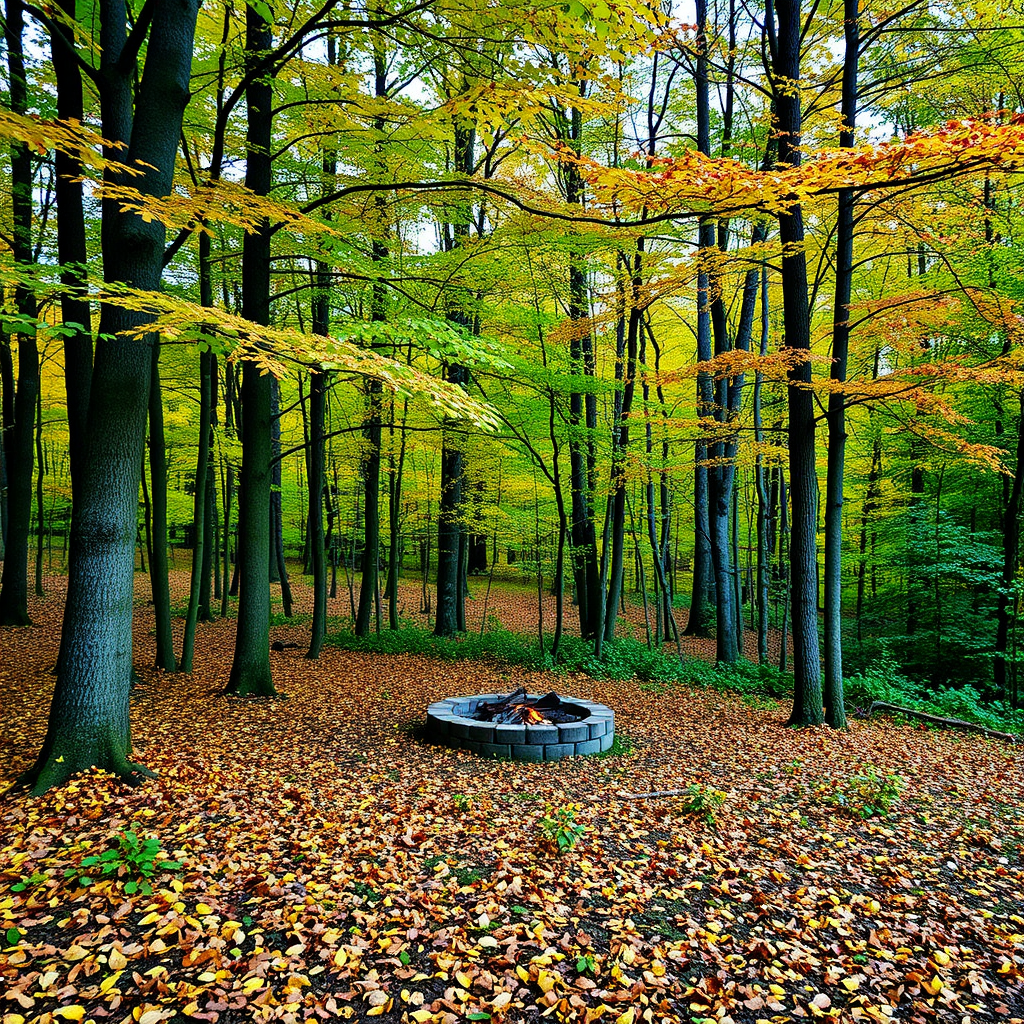
What Is Forest Bathing: A Brief History
Also called Shinrin-Yoku, forest bathing is the Japanese practice of spending time in a natural setting like a forest, park, or preserve area to boost well-being and personal health.
You interact with the senses, being mindful, and submerge yourself in the environment to reduce stress.
It’s basically therapy enacted in a natural surrounding such as a forest, park, the woods, even a botanical garden is a suitable setting for this.
Cleveland Clinic offers an explanatory article called, “Forest Bathing: What It Is and Its Potential Benefits” that introduces and defines what this mysterious practice of natural setting mindfulness can provide if we keep an open mind and follow the research that has been done.
Mindfulness is at the core of this practice.
Originated in the 1980s, this method of self-awareness and slowing oneself down to observe his or her environment is vital to stress reduction.
The Harvard Health Publishing post from Harvard medical School titled, “Can Forest Therapy Enhance Health and Well-Being?” delves into that very question.
The piece goes on to explain, “A recent study in the United Kingdom of nearly 20,000 people showed that spending at least 120 minutes a week in nature improved self-reported health and well-being.”
That’s a pretty incredible tradeoff for sitting in a natural environment and enjoying peace and quiet for a change.
Imagine how much that could help you center and practice mindfulness on a weekly, or even daily basis.
Your stress levels would plummet, cortisol levels would decrease, and your peace of mind and inner peace would be restored.
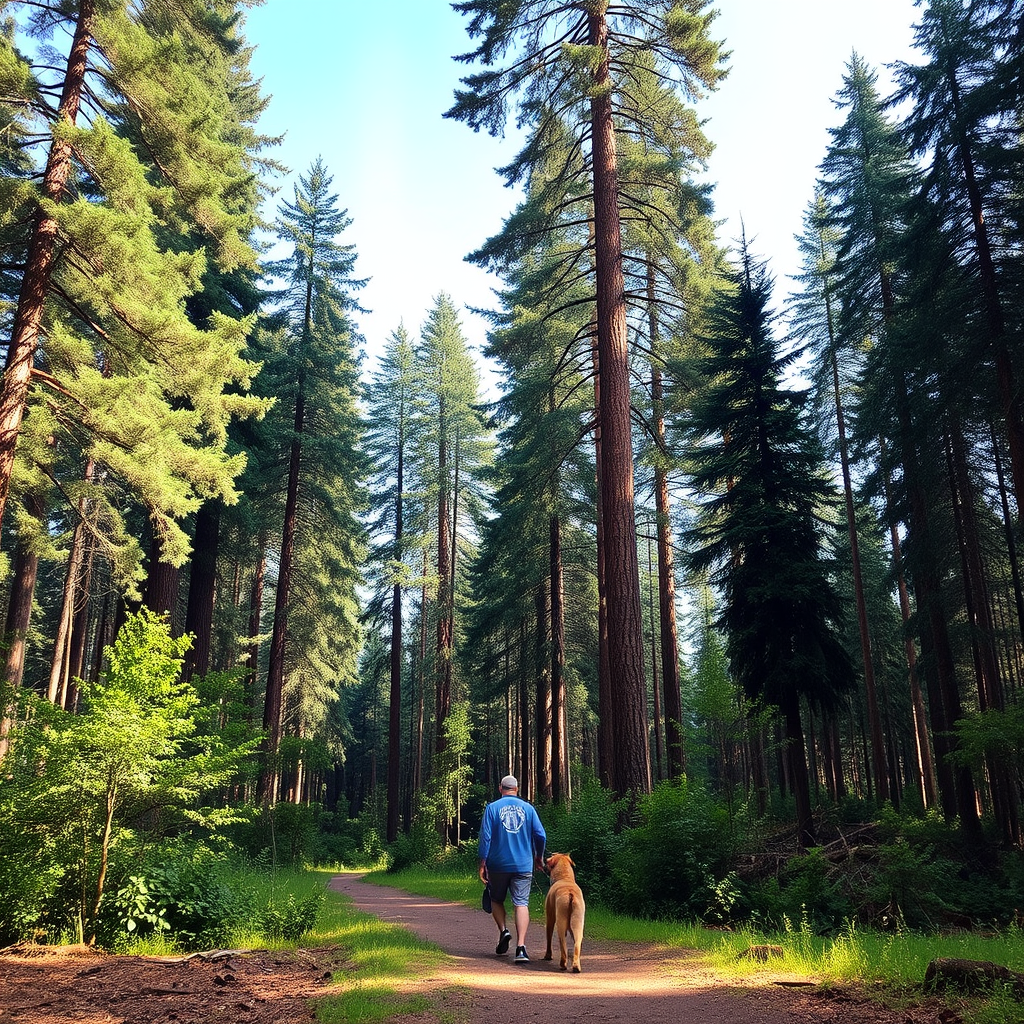
Why Should We Be Doing It?
What are the benefits of forest bathing?
Some research has proven that forest bathing can help reduce stress, lower hypertension, high blood pressure, and even lower stress hormones such as cortisol.
In a US News.com write-up titled, “Forest Bathing: How Nature and Being Outdoors Can Improve Your Health | U.S. News“ shows that these things are the real deal, and forest bathing does in fact offer health benefits right along with a good dose of fresh air and a beautiful view of nature.
More can be seen in the article, “What is Forest Bathing and How Does it Benefit Mental and Physical Health” provided by Psychiatry.org.
Additional benefits of this practice include such eyebrow raising items as healthier immune function, mental health benefits like focus and being happier along with lowering symptoms of depression, fatigue, anxiety.
Creativity and problem solving can be enhanced by forest bathing, as mentioned in the article “What the Heck is Forest Bathing? 5 Things You Didn’t Know About Shinrin-Yoku in BC” by Carolyn Ali on the hellobc.com website.
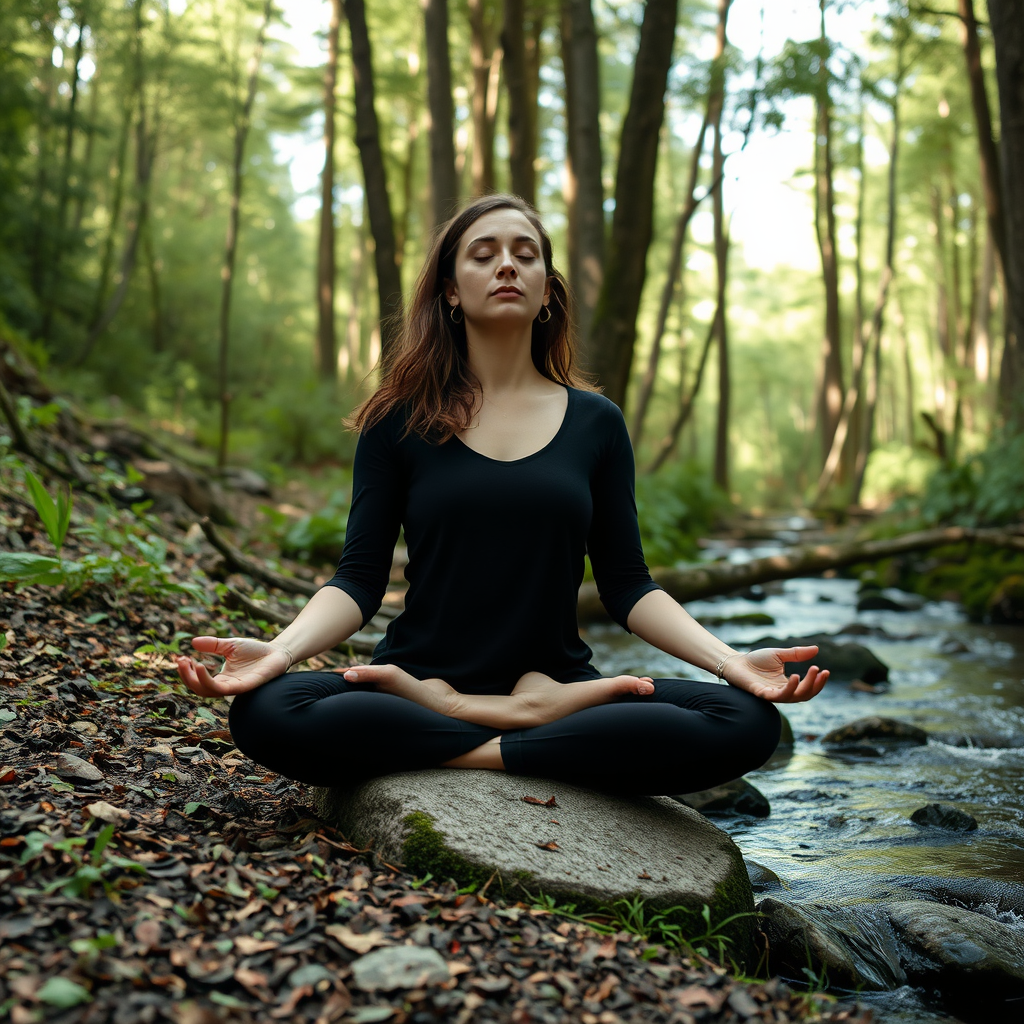
Where Can Forest Bathing Be Done?
It begins in the forest filled with natural foliage, lush trees and bushes, plants, and animals.
But in truth, forest bathing can be done anywhere that natural environment is available such as a park, garden, preserve, sanctuary, other natural settings.
If you think about it, don’t you feel more at ease when you are walking along a wooded path?
How about a local park with blooming flowers and other colorful foliage?
This is the benefit you want to focus on when forest bathing.
No stress.
No anxiety.
No overwhelm.
Just mindful centering on your surroundings and the beauty and simplicity that the natural setting provides.
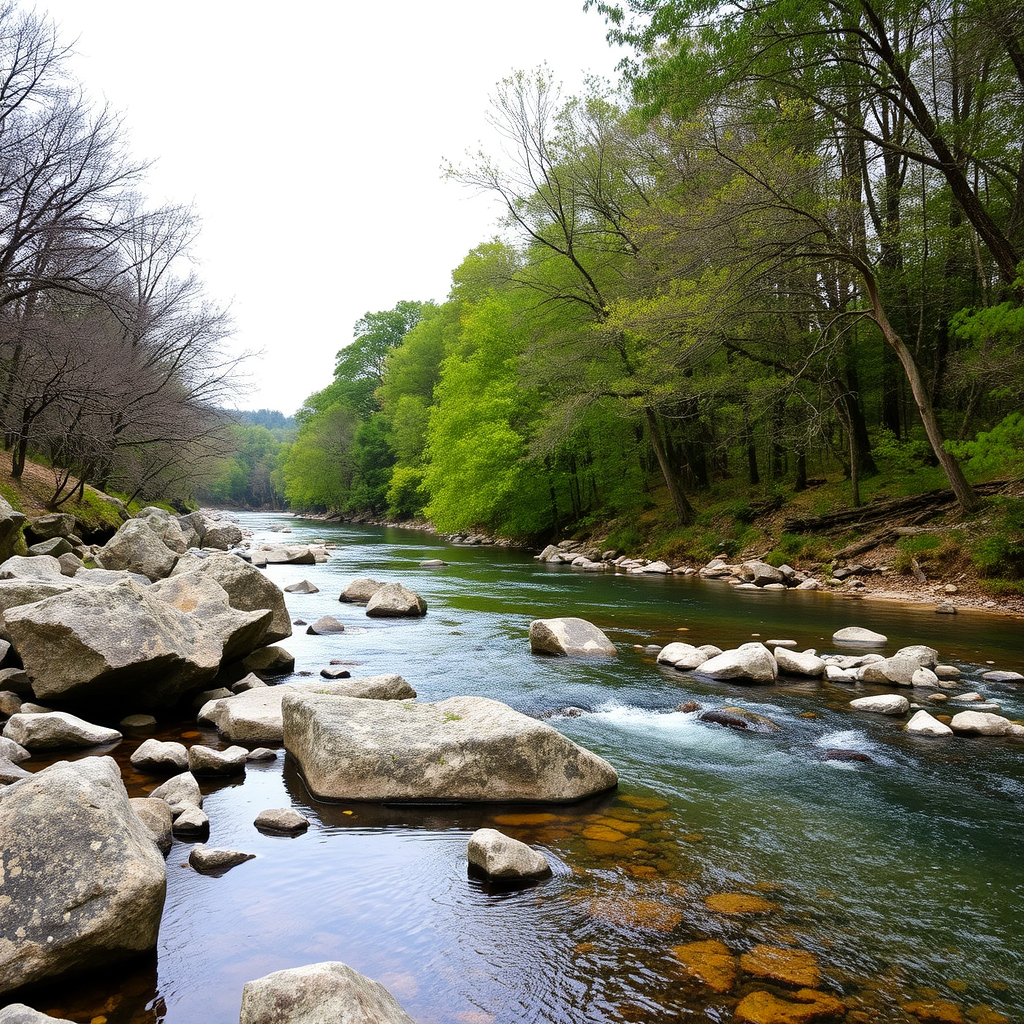
How Does One Forest Bathe?
But how exactly does one forest bathe?
The first thing needed is the location of a quiet natural space where you can decompress and take in the sounds of nature.
Leave those smart devices behind so you’re not distracted. If you HAVE to have them, at least put them on silent and turn off vibrations when you get messages or calls so you can focus on what you’re doing in the moment without being disturbed.
This is your time to be with nature and get outside of your own head.
Away from the stress and anxiety of everyday life.
Far from those work obligations, family drama, and complicated situations that constantly bring you down.
Invest in yourself by doing this. Aren’t you worth this time?
1. Take Advantage of Where Your Senses Guide You
Using your sense of smell, sight, touch, hearing, and taste to connect you with your natural surroundings are a few things you can do to begin the process.
Taking in the smells of florals bursting forth with their brilliantly vivid hues of color and memorable aromas can leave a lasting impression on most anyone who takes a moment to stop and appreciate those gifts from nature.
The sounds of a stream nearby, birds singing in harmony almost in trees above, a simple breeze reviving your senses and your being. All of these things are included in forest bathing.
2. Slow Yourself Down
This does take some time to get the hang of.
Slowing ourselves down, in any setting, can be difficult.
Especially if we live lives that require our constant attention. This, of course, raises stress and anxiety levels causing us more problems than not, and leads to an array of health issues after a while.
Practice just being in the moment…being present.
That’s mindfulness.
That’s what you’re looking for here.
Concentrate only on this very moment.
Not yesterday’s news, today’s to-do list, or tomorrow’s schedule.
Just be.
Just focus on this very second.
Nothing else.
Inhale then exhale. Slowly and with intention to be calm and mindful.
Be one with this very moment. Then the next, and the next.
3. Practice Mindfulness by Focusing on the Present Moment
Don’t think about the past or the future.
Observe the bright green blades of green grass moving with the breeze back and forth.
Hear the song of birds flying and nesting overhead in the towering trees as the breeze sways the lighter branches back and forth reminiscent of the sound of the surf washing in and out on a beach.
Enjoy the calm sound of a nearby stream babbling past rocks and boulders in the water and watch as it makes it way effortlessly around the stones.
Touch the trunk of a tree and feel its coarseness or rub your fingers along a leaf and observe how soft and pliable it is.
Smell the earthiness of the natural setting and how florals or other aromas waft past for you to take in.

Fun Facts About Forest Bathing
According to an article based on Japanese research, the relaxation benefits of practicing forest bathing lasted from 3-5 days for a selected group of office workers. Again, referring back to the Psychiatry.org article titled, “What Is Forest Bathing and How Does it Benefit Mental and Physical Health?”
You can enhance your forest bathing experience by bringing a picnic basket with lunch for yourself or incorporate yoga or stretches during your time in nature.
Take photos of natural plant and floral species while forest bathing as you explore your surroundings.
120 minutes per week sis recommended for continual positive results and lowering of stress based on results of a study by MUSC Health in an article titled, “The Healing Power of Forest Bathing: A Dive into Shinrin-Yoku“.
This time can also be broken into shorter sessions during the week if you don’t have the luxury of doing it all in one full session.
You can even journal during part of your forest bathing session.
Why not?
This is your time to relax, meditate, be open-minded, be mindful, and do something for yourself with no distractions!
Forest bathing is a proven methos of practicing mindfulness in a natural setting. It doesn’t cost anything to start doing, and you just might be surprised at the beneficial effects it has on your life.
My Mindful Request:
Take some time during your hectic week and start making time for yourself to gain the beneficial effects of forest bathing in your town. Find a park with flowering trees, a lake with a lush surround, a forest or patch of woods – maybe with a calming babbling stream running through it. Nature is all around us. We just have to look and we can find that perfect sanctuary to call our own for practicing Shirin-Yoku. Get out there and start for a little while, then increase it as you continue doing it.
